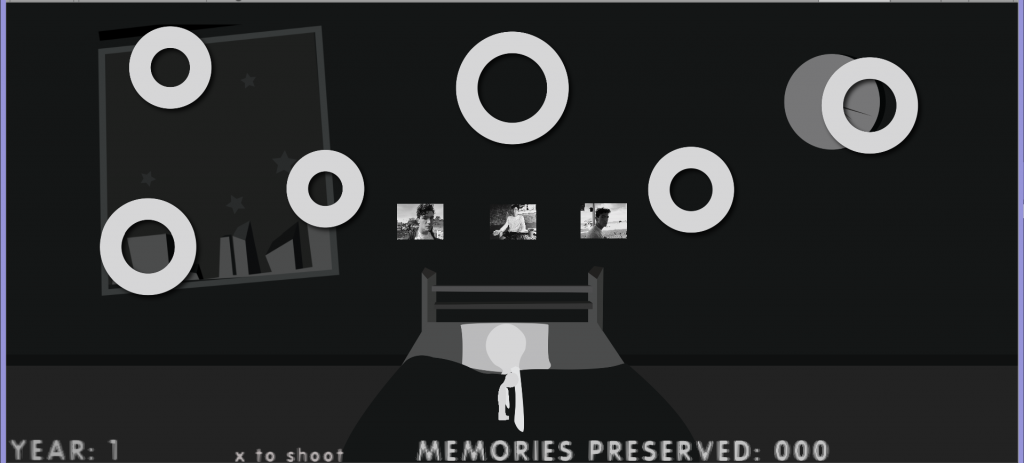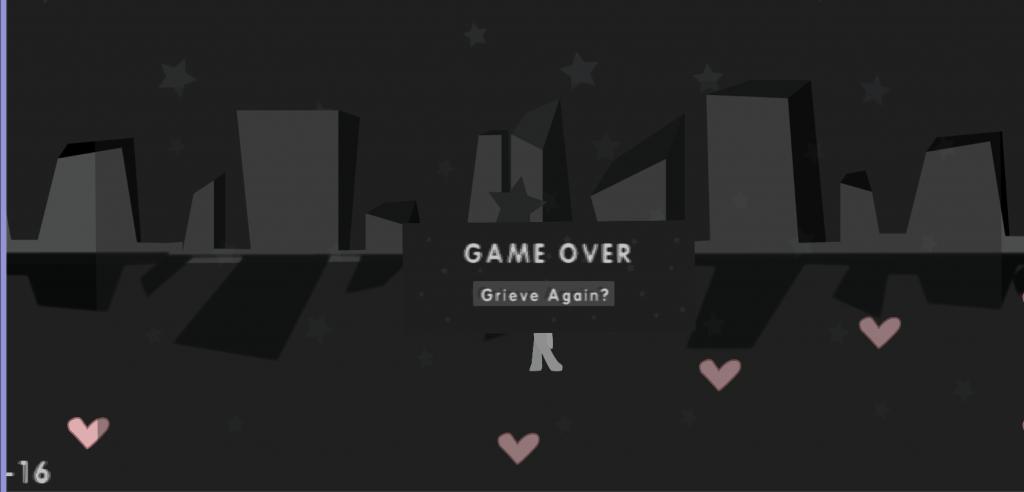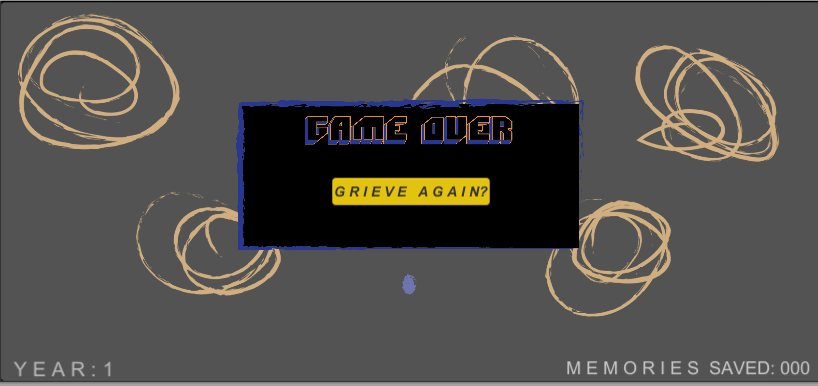
(content warning: grief)
The game I built for my conference work is a little bit different from the other games I’ve built in the past year. The basic world metaphor for my game comes from my experience with grief within the past two years. My boyfriend passed away unexpectedly two years ago, and since then I’ve had a hard time vocalizing my feelings of grief to others, and my therapist told me that I should put my grief into my art as a way to express it. So–I made In Loving Memory. The first level doesn’t have a strong world metaphor, it just is an artistic expression of how it feels to walk around in the world. Even when good things happen, represented by the hearts, the path always ends up the same, the grief is still present.
The second level is meant to portray my experience of insomnia from grief. I’ve got a fear that while I sleep, my R.E.M. cycle will clean out my old memories, as that’s one of the functions of the R.E.M. cycle, and I’ll lose happy memories of my boyfriend. So I’m awake all night, afraid to sleep and replaying memories of my boyfriend over and over again. This is represented by the player shooting little bits of love at constantly shrinking memories–inevitably the memories all shrink into non-existence to show how it feels that I just cannot beat my grief, it’s always there with me. The game restarts and I do the whole day again.
I’d had this idea for a mechanic and world metaphor since the Shooter game, but I realized after working on the Shooter game that my artwork wasn’t strong enough to carry a metaphor that was so heavy and meaningful to me. So I changed all of the artwork for this conference, using color and contrast to create a mood similar to what I felt. I did the same thing with the sound. In the first level, I recorded wind sounds outside Heimbold late at night when no one was around to try to capture feelings of peaceful, constant, melancholy. In the second level, I used the anxious, fast-paced electronic track I had made for my Shooter game to try to make the player feel anxious in the way I feel when I’m trying to sleep.

I think my player path was very clear in the first level. It was clear what the objective was and what the path to achieving that objective was. Collect the hearts, avoid the stars, reach the headstone. In the second level, however, players got a bit mixed up. I didn’t restrict the player path to the x-axis, so sometimes the player would collide with and get stuck to the memory objects. This can just be chalked up to inefficient coding on my part, and once I figure out how to fix that problem the player path will be much more clear.
I think the path was most entertaining in the first level. The scenery was more present in this one because in the second level’s artwork was obscured by the memory objects. Also in the first level, the scenery changed a bit with a scrolling background and falling stars–it gave the illusion of movement and travel that the second level did not.
All in all, I’m really proud of this game–I really enjoyed the class critique of my game since it gave me a chance to communicate feelings of grief without necessarily putting my face on it and making people uncomfortable like I’m sure this post-mortem reflection probably is doing.


